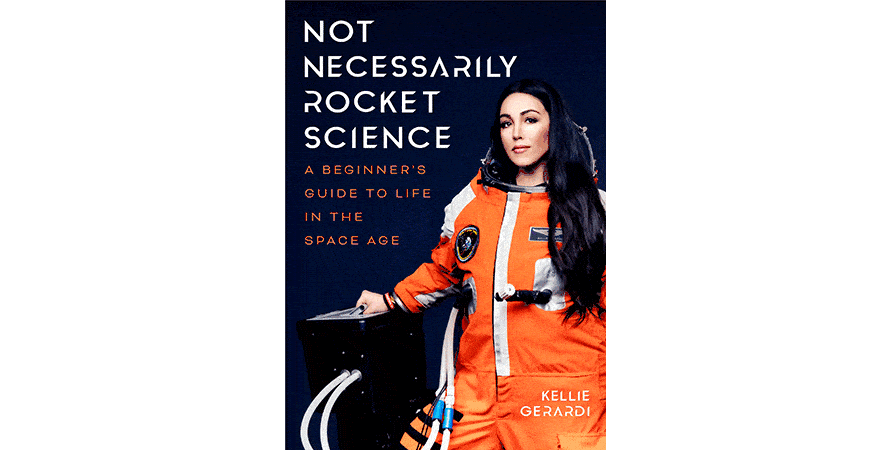Category: Nonfiction
Reviewed by: Ted Spitzmiller
Title: Not Necessarily Rocket Science: A Beginner’s Guide to Life in the Space Age
Author: Kellie Gerardi
NSS Amazon link for this book
Format: Hardcover/Kindle/Audio
Pages: 262
Publisher: Mango Publishing Group
Date: November 2020
Retail Price: $19.95/$11.99/$30.62
ISBN: 978-1642504101
While essentially an autobiography, the author first takes the reader through a brief history of the universe, starting with the Big Bang and moving through some discussion of evolution. The discoveries of Galileo, Copernicus, and Newton deposit the reader at Kellie’s awakening of spaceflight as a child. She progresses through Verne, Asimov, Clark, and Heinlein and assimilates Tsiolkovsky and Goddard to arrive at von Braun and the V-2.
Reviewing the space race, Sputnik goes by in a flash, and the Apollo program is summarized in a few pages. While most of her overview is reasonably accurate, her characterizing the first female astronaut as having “piloted Vostok 6” will introduce the reader to her fervor of promoting the female of the species—Valentina Tereshkova was in fact hardly more than a passenger.
The Shuttle project continues with the human aspect while there was a faux pas when she notes, “… the Soviet Union… managed to send the first human-made objects to Mars.” They did indeed, but she fails to mention that all communications had ceased with the spacecraft well before the encounter. It wasn’t until the American Mariner 4 flew past Mars in July of 1965 that any data and photos were returned of the red planet.
The author then begins to move her non-technical training in the film industry closer to her increased desire to be a part of the space program. Encouraged by the Ansari X Prize, she looks for opportunities to meet some of the notables privatizing the space effort. She does a nice job of introducing the reader to many of those who have formed companies to compete in the burgeoning commercial space industry, of which she now has a passion to become a part.
One purpose of this book is to provide examples of how those with non-technical degrees might find worthwhile and exciting careers in the space endeavor. In this respect, she does well. For instance, in her early efforts, the author notes how she worked into a media and communications position, such as writing press releases that led to organizing media events for the upcoming contractors. This exposure, by its very nature, provided the author with invaluable knowledge of the vocabulary and basic science involved in space flight.
With her closer involvement came the desire to take at least a suborbital flight on one of the “pay for flight” programs being promoted. Her increasing abilities and personal character traits opened many doors, and through her networking, she has achieved a high degree of success.
Early on, the author notes the importance of space to our daily lives here on Earth and that there are few areas untouched by the technology being employed. Then she identifies critical decisions taken by various administrations, starting with Eisenhower and Kennedy, that have put the United States into a leading position.
She makes many notable statements that young readers would do well to follow regarding their own personal development and advancement. These include: “I don’t need to be the smartest person in the room, but I always aimed to be among the hardest working.” Another good one: “When you are truly focused on the outcome, there is no job too small.”
One part of her book that I found particularly interesting was her involvement with the Mars Desert Research Station (MDRS). She states, “The habitat offers a simulation of life on the red planet, and the prototype laboratory is a serious scientific base for researchers dedicated to advancing humanity’s ability to live off Earth.”
While the book has some redeeming qualities, its presumption of finding meaningful employment in the space industry by those having degrees not directly related to technology is weak. The past few decades have left a trail of unemployables with degrees in the “arts.” The author’s experiences are based on an individual who has some exceptional qualities that are not always available to the average person.
© 2021 Ted Spitzmiller
Please use the NSS Amazon Link for all your book and other purchases. It helps NSS and does not cost you a cent! Bookmark this link for ALL your Amazon shopping!



















